NIMBioS Graduate Assistantships
NIMBioS is currently not accepting new requests for support for Graduate Assistantships. In 2019, NIMBioS announced a new Graduate Award program to supplement the funding available for UTK/UTIA graduate students to enhance their research and education. Click here for more information about the 2019 Graduate Award Program.
Overview
Beginning in 2008, NIMBioS invited current UTK/UTIA graduate students working at the interface between mathematics and biology to apply for graduate assistantships with the Institute. The NIMBioS GRA program supported graduate students in high priority areas, including, but not limited to, computational biology, conservation and natural resource management, STEM education and evaluation, spatial biology and infectious disease modeling. Graduate student projects that foster interdisciplinary interactions across campus units was a particular interest.
Applications were considered in the spring semester of each year for funding in the subsequent academic year, beginning August 1st. Students selected for the Assistantships were awarded stipend support ($22,500 for 9 months) and a tuition waiver to work on their proposed research topic in areas at the interface between mathematics and biology. Current awardees are expected to be in residence at the University of Tennessee for the academic year of the awarded assistantship. NIMBioS offers travel support to scientific meetings for Assistants to present their research.
In addition to carrying out their research as specified in their proposal, Assistants are expected to assist with NIMBioS activities, including providing computational support (including assisting with model development, analysis and coding) for NIMBioS participants, assisting in Working Group and Workshop activities, and/or collaborating with postdocs and NIMBioS faculty and students.
A goal of NIMBioS is to enhance the cadre of researchers capable of interdisciplinary efforts across mathematics and biology. As part of this goal, NIMBioS is committed to promoting diversity in all its activities. Diversity is considered in all its aspects, social and scientific, including gender, ethnicity, scientific field, career stage, geography and type of home institution. Questions regarding diversity issues should be directed to diversity@nimbios.org. You can read more about our Diversity Plan on our NIMBioS Policies web page. The NIMBioS building is fully handicapped accessible.
Current Graduate Research Assistant
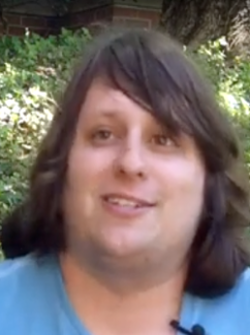 Tyler Poppenwimer
Tyler Poppenwimer
Dates: Dates: Fall 2019 - current
Tyler Poppenwimer is a doctoral student in Ecology and Evolutionary Biology. His research focuses on interactions between plants and mycorrhizae in the soil.
In his project at NIMBioS he collaborates with the NISER staff on several analyses of extensive data on NIMBioS activities regarding the effectiveness of center-scale activities.
Past Graduate Research Assistants
 Anna Jo Auerbach
Anna Jo Auerbach
Dates: Spring 2016
Anna Jo Auerbach earned a Ph.D. in ecology and evolutionary biology in 2016. Her dissertation focused on undergraduate biology education. At NIMBioS, she worked on projects related to the development of the Quantitative Biology Concept Inventory.
After graduating, she accepted a postdoctoral fellowship at the University of Georgia.
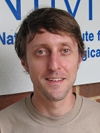 Jeremy Auerbach
Jeremy Auerbach
Dates: Fall 2013 - Spring 2014
Jeremy Auerbach graduated with a master's degree in mathematics in 2013. His research focuses on modeling the evolution and maintenance of leadership in small-scale societies. He is currently a doctoral student in geography at the University of Tennessee, Knoxville.
Publications
- Ganusov VV, Auerbach J. 2014. Mathematical modeling reveals kinetics of lymphocyte recirculation in the whole organism. PLoS Computational Biology, 10(5): e1003586. [Online]
Presentations
- Auerbach J, Burghardt G. June 2014. Poster: To play, or not to play, that's a resource abundance question. Evolution 2014, Raleigh, NC.
- Auerbach J, Gavrilets S, van Vugt M. June 2014. Fairness and wisdom: The emergence of leadership. Evolution 2014, Raleigh, NC.
- Auerbach J. 2014. Knowledge and fairness: Leadership through reputation. Advanced Research and Methods Seminar, U.S. Government Accountability Office.
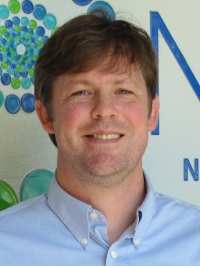 Jason Bintz
Jason Bintz
Dates: Fall 2014 - Spring 2015
Jason Bintz earned a Ph.D. in Mathematics in 2015. His dissertation focused on population modeling for resource allocation and antimicrobial stewardship. After graduating, he accepted a faculty position as assistant professor of applied mathematics at Houghton College in Houghton, New York.
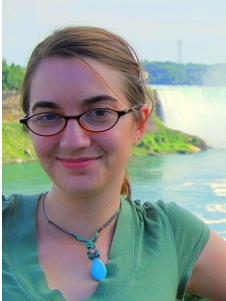 Erin Bodine
Erin Bodine
Dates: Fall 2009 - Spring 2010
Erin Bodine earned a Ph.D. in Mathematics in 2010. Her dissertation focused on applying optimal control theory to species augmentation. She won the Univ. of Tennessee Math Department's Graduate Student Achievement Award. After graduating, Bodine accepted a position as assistant professor of mathematics at Rhodes College in Memphis.
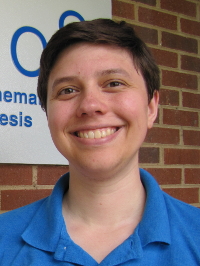 Danielle Burton
Danielle Burton
Dates: Fall 2017 - Fall 2018
Danielle Burton is a doctoral candidate in mathematics whose research
focuses on optimal control of difference equations describing
populations and on examining the effects of processes such as harvesting
or dispersal on individual or coupled populations.
Publications
- O'Regan SM, Burton DL. 2018. How stochasticity influences leading indicators of critical transitions. Bulletin of Mathematical Biology 80(6): 1630-1654. [Online]
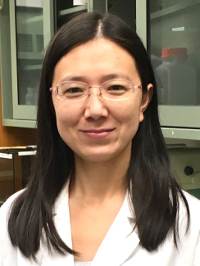 Yuzhuo Chu
Yuzhuo Chu
Dates: Fall 2011 - Spring 2012
Yuzhuo Chu earned a Ph.D. in biochemistry and cellular and molecular biology in 2013. Her research focuses on a new mathematically-based approach to score protein modeling predictions.
After graduating, she accepted a postdoctoral fellowship at Louisiana State University.
Publications
- Chu Y, Li G, Guo H. 2013. QM/MM MD and free energy simulations of the methylation reactions catalyzed by protein arginine methyltransferase PRMT3. Canadian Journal of Chemistry, 91(7): 605-612. [Online]
- Chu Y, Yao J, Guo H. 2012. QM/MM MD and free energy simulations of G9a-like protein (GLP) and its mutants: Understanding the factors that determine the product specificity. PLoS One, 7(5): e37674. [Online]
- Yao JZ, Chu YZ, An R, Guo H. 2012. Understanding product specificity of protein lysine methyltransferases from QM/MM molecular dynamics and free energy simulations: The effects of mutation on SET7/9 beyond the Tyr/Phe switch. Journal of Chemical Information and Modeling, 52(2): 449-456. [Online]
 Blaise DeCotes
Blaise DeCotes
Dates: Fall 2012 - Spring 2014
Blaise DeCotes earned a M.S. in Computer Science in 2014. His research focuses on high performance computing and large data visualization. After graduating, DeCotes accepted a position as a software engineer for a web-based startup company.
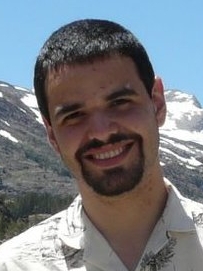 Edgar Duenez-Guzman
Edgar Duenez-Guzman
Dates: Fall 2009 - Spring 2010
Edgar Duenez-Guzman earned a Ph.D. in Computer Science in 2010. His dissertation research focused on the evolution of complex adaptations through modeling the evolution of pleiotropy and mutational correlations using individual based models with explicit genetics. After graduating, Duenez-Guzman accepted a postdoctoral fellowship in the Department of Organismic and Evolutionary Biology at Harvard University.
He is currently a senior research/software engineer at DeepMind.
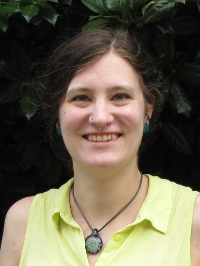 Christine Dumoulin
Christine Dumoulin
Dates: Fall 2014 - Spring 2016
Christine Dumoulin graduated with a Ph.D. in ecology and evolutionary biology in spring 2017. Her research focuses on spatial questions in ecology and conservation biology, in particular conservation planning and population dynamics.
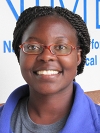 Pelagie Favi
Pelagie Favi
Pelagie Favi earned a Ph.D. in Polymer Engineering in 2014. Her dissertation research focused on designing bacterial cellulose scaffolds for tissue engineering of stem cells. After graduating, Favi accepted a position as
ADVANCE Future Faculty Postdoctoral Fellow at Northeastern University in Boston, MA.
She is currently a process engineer at Intel.
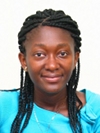 Boloye Gomero
Boloye Gomero
Dates: Fall 2010 - Spring 2014
Boloye Gomero earned a master's degree in mathematics under the guidance of Dr. Suzanne Lenhart at the University of Tennessee. Her research focused on parameter sensitivity analysis for mathematical models of cholera. After graduating, Gomero joined the math faculty at Webb School of Knoxville.
She is currently on the math faculty at Bullis School, Potomac, Maryland.
 Mauricio Gonzalez-Forero
Mauricio Gonzalez-Forero
Dates: Fall 2010 - Spring 2012
Mauricio Gonzalez-Forero earned a Ph.D. in ecology and evolutionary biology in 2013. His dissertation research focuses on mathematical modeling of the evolution of sociality. After graduating, Gonzalez-Forero accepted a postdoctoral fellowship in the Department of Ecology and Evolutionary Biology at the University of Lusanne.
He is currently a Marie Curie Fellow in the Andy Gardner group at the University of St Andrews, UK.
Publications
- Gonzalez-Forero M. 2015. Stable eusociality via maternal manipulation when resistance is costless. Journal of Evolutionary Biology, 28(12): 2208-2223. [Online]
- Gonzalez-Forero M. 2014. An evolutionary resolution of manipulation conflict. Evolution, 68(7): 2038-2051. [Online
- Gonzalez-Forero M, Gavrilets S. 2013. Evolution of manipulated behavior. The American Naturalist, 182(4): 439-451. [Online]
 Gwen Iacona
Gwen Iacona
Dates: Fall 2012 - Spring 2013
Gwen Iacona
earned a Ph.D. in ecology and evolutionary biology in 2014. Her dissertation focused on decision making in conservation, particularly how planners can account for the costs of managing protected areas. After graduating, she accepted a Postdoctoral Research Fellowship at the Centre of Excellence for Environmental Decisions, based at the University of Queensland (Australia).
Publications
- Iacona GD, Bode M, Armsworth PR. 2016. Limitations of outsourcing on‐the‐ground biodiversity conservation. Conservation Biology. [Online]
- Iacona G, Price FD, Armsworth PR. 2016. Predicting the presence and cover of management relevant invasive plant species on protected areas. Journal of Environmental Management, 166: 537-543. [Online]
- Iacona, G.D. 2014. Dissertation: The economic costs and ecological benefits of protected areas. University of Tennessee, Knoxville.
Presentations
- Iacona GD, Price FD, Armsworth PR. December 2014. Predicting invadedness on protected areas. Invited webinar for Conservation Biology Institute.
- Iacona GD, Price FD, Armsworth PR. October 2014. Predicting invadedness on protected areas. Invited webinar for Nature Serve.
- Iacona GD, Bode M, Armsworth PR. August 2013. Modeling the effectiveness of funding biodiversity protection as a multiplayer game with interacting conservation organizations. INTECOL, London, UK.
- Iacona GD, Bode M, Armsworth PR. July 2013. Measuring the effectiveness of funding biodiversity conservation using a game theoretic framework. Poster presented at the Society for Conservation Biology International Conference for Conservation Biology, Baltimore MD.
- Iacona GD, Price FD, Armsworth PR. 2012 December. Predicted invadedness of protected areas varies across species but is independent of funding. Ecological Society of Australia Conference, Melbourne, VIC.
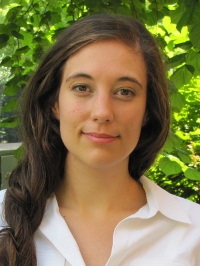 Elizabeth Johnson
Elizabeth Johnson
Dates: Fall 2016 - Spring 2017
Elizabeth Johnson earned a Ph.D. in microbiology. Her research focused on constructing ordinary differential equations to examine the kinetics of HIV evolution within patients. She also used computational methods to create fitness landscapes of the HIV genome from cross-sectional samples of HIV sequences.
 Michael Kelly
Michael Kelly
Dates: Fall 2013 - Spring 2014
Michael Kelly earned his Ph.D. in Mathematics in 2014. His dissertation research focused on optimal control of ordinary and partial differential equations with applications to spatial-temporal management in epidemiological and natural resources models. After graduating, Michael accepted a position as a visiting assistant professor of mathematics at The Ohio State University in Columbus.
He is currently an assistant professor of mathematics at Transylvania University.
Presentations
- Kelly, MR. March 2014. Optimal fishery harvesting on a nonlinear parabolic differential equation in a heterogeneous spatial domain. Special Session: Diversity of Modeling and Optimal Control: A Celebration of Suzanne Lenhart's 60th Birthday, American Mathematical Society (AMS) Southeastern 2014 Sectional Meeting, Knoxville, TN.
- Kelly, MR. January 2014. Optimal fishery harvesting on a nonlinear parabolic differential equation in a heterogeneous spatial domain. American Mathematical Society (AMS) Special Session on Reaction Diffusion Equations and Applications, Joint Mathematics Meetings, Baltimore Convention Center, Baltimore, MD.
- Kelly, MR. November 2013. The impact of human and pathogen movement on optimal vaccination strategies in a cholera epidemic. Invited Graduate Student Seminar, Maryville College, Maryville, TN.
- Kelly, MR. October 2013. Optimal fishery harvesting on a nonlinear parabolic differential equation in a heterogeneous spatial domain. Southeastern-Atlantic Regional Conference on Differential Equations, Univ. of Tennessee, Knoxville, TN.
- Kelly, MR. August 2013. Optimal fishery harvesting on a nonlinear parabolic differential equation in a heterogeneous spatial domain. Workshop for Young Researchers in Mathematical Biology, Mathematical Biosciences Institute (MBI), The Ohio State University, Columbus, OH.
 Cedric Landerer
Cedric Landerer
Dates: Fall 2016 - Fall 2018
Cedric Landerer
defended his Ph.D. in ecology and evolutionary biology in Fall 2018 and accepted a postdoctoral fellowship at the Max-Planck-Institute for Molecular Cell Biology and Genetics in Dresden, Germany in the group of Agnes Toth-Petroczy. His research focuses on the use and development of mathematical and computational methods to infer protein properties such as synthesis rate, co-translation folding, and optimal amino acid usage and their evolution within and across species, from patterns of codon usage.
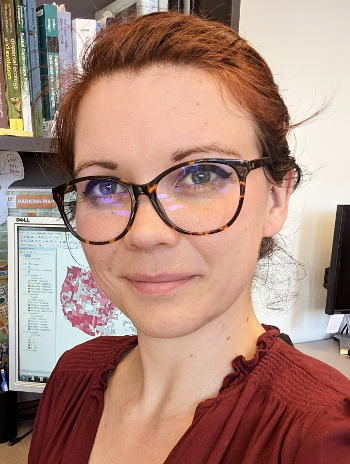 Diane Le Bouille
Diane Le Bouille
Dates: Fall 2017 - Fall 2018
Diane Le Bouille
is a doctoral student in ecology and evolutionary biology. Her research focuses on conservation planning and optimization. She uses mathematical modeling to better understand and predict costs associated with protected areas, then spatial optimization approaches to inform reserve design and selection. She works directly with conservation organizations and practitioners to help guide conservation practices.
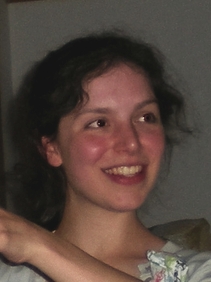 Rachel Leander
Rachel Leander
Dates: Fall 2009 - Spring 2010
Rachel Leander earned a Ph.D. in Mathematics. Her dissertation focused on optimal control of invasive species models with discrete time and of models of oscillator networks. After graduating, Leander accepted a postdoctoral fellowship at the Mathematical Biosciences Institute at The Ohio State University.
She is currently an assistant professor of mathematics at Middle Tennessee State University.
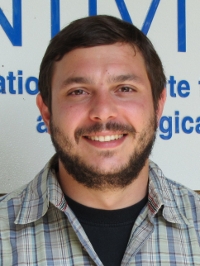 Ben Levy
Ben Levy
Dates: Fall 2014 - Spring 2016
Ben Levy earned a Ph.D. in Mathematics. His research focused on modeling feral hogs in Great Smoky Mountains National Park. Upon graduating, Levy accepted a faculty position in mathematics at Fitchburg State University, Fitchburg, MA.
Publications
- Levy B, Collins C, Lenhart S, Stiver W. 2017. Evaluating wild hog preferences to guide control strategies in the Great Smoky Mountains National Park. Natural Resource Modeling, 30(3): e12132. [Online]
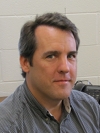 John Martin
John Martin
Dates: Fall 2011 - August 2016
John Martin earned a Ph.D. in computer science. His research focused on large scale text mining specifically related to Latent Semantic Analysis and related technologies. At NIMBioS, he helped develop and implement an administrative database system.
Martin is founder of Small Bear Technologies, Inc. After graduating, he accepted a position as Senior Vice President and Chief Technology Officer for VortexT Analytics, Inc.
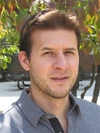 Marco V. Martinez
Marco V. Martinez
Dates: Fall 2009 - Spring 2010
Marco V. Martinez earned a Ph.D. in Mathematics and a M.S. in Statistics. His dissertation researched focused on optimal control of invasive species models with discrete time and continuous space. After graduating, Martinez accepted a tenure-track position at North Central College in Chicago, IL.
Publications
- Martinez MV, Lenhart S, White KAJ. 2015. Optimal control of integrodifference equations in a pest-pathogen system. Discrete and Continuous Dynamical Systems - Series B, 20(6): 1759-1783. [Online]
Presentations
- Martinez M. January 2013. Optimal control of integrodifference equations in a host-pathogen system. Speaker, Joint Mathematics Meetings, San Diego, CA.
- Martinez M. October 2012. Optimal control of integrodifference equations in a host-pathogen system. SEARCDE, Winston Salem, NC.
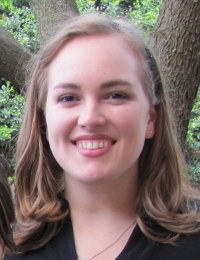 Kathryn Massana
Kathryn Massana
Dates: Fall 2015 - Spring 2017
Kathryn Massana earned a Ph.D. in ecology and evolutionary biology. Her research focused on developing a new continuous biogeography model that infers the ancestral geographic range of taxa and incorporates dispersal barriers, allows for heterogeneity in dispersal estimation and has the ability to use multi-gene data.
She is currently an analytical training consultant at SAS.
 Austin Milt
Austin Milt
Dates: Fall 2013 - Spring 2015
Austin Milt
earned a Ph.D. in ecology and evolutionary biology in Spring 2015. His research focused on estimating and reducing future terrestrial habitat impacts from natural gas surface infrastructure development in the Appalachian region.
He is currently at postdoctoral fellow at the Center for Limnology at University of Wisconsin-Madison.
Publications
- Milt AW, Gagnolet T, Armsworth PR. 2016. Synergies and Tradeoffs Among Environmental Impacts Under Conservation Planning of Shale Gas Surface Infrastructure. Environmental Management, 57(1): 21-30. [Online]
Presentations
- Milt AW, Armsworth PR. December 2013. Poster: Environmental impacts of Marcellus gas development: Tradeoffs among impacts and siting practices. The Nature Convervancy's All Science Meeting, Santa Clara, CA.
 Eric Numfor
Eric Numfor
Dates: Fall 2012 - Spring 2013
Eric Numfor earned a Ph.D. in Mathematics. His dissertation focused on models linking epidemiology with immunology and ecology, and optimal control of such linked models. After graduating, Numfor accepted a tenure-track position at Georgia Regents University.
He won the University of Tennessee Math Department's Graduate Student Achievement Award.
He is currently an assistant professor of mathematics at the University of Augusta.
Publications
- Numfor E, Bhattacharya S, Lenhart S, Martcheva M. 2014. Optimal control in coupled within-host and between-host models. Mathematical Modelling of Natural Phenomena, 9(4): 171-203.
Presentations
- Numfor E. July 2013. Optimal control applied in coupled within-host and between-host models. SIAM Annual Meeting, San Diego, CA.
- Numfor E. March 2013. Optimal control applied in coupled within-host and between-host models. SIAM-SEAS Annual Meeting, Knoxville, TN.
- Numfor E. October 2012. Optimal control applied in coupled within-host and between-host models. SEARCDE, Winston Salem, NC.
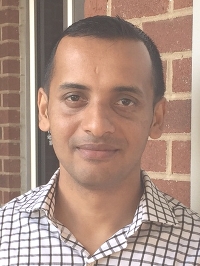 Buddhi Pantha
Buddhi Pantha
Dates: Fall 2015 - Spring 2016
Personal website
Buddhi Pantha earned a Ph.D. in Mathematics in 2016. His research is in applied mathematics with specific areas of interests in mathematical biology (epidemiology, ecology, host-pathogen interaction, immune systems and co-infections), optimal control, mathematical and computational modeling, dynamical system and differential equations. His current research focuses on optimal control for anthrax outbreak and host pathogen interaction in pulmonary anthrax infection. After graduating, he accepted a faculty position as assistant professor of mathematics at Abraham Baldwin Agricultural College, Tifton, GA.
Publications
- Pantha B, Day J, Lenhart S. 2016. Optimal control applied in an anthrax epizootic model. Journal of Biological Systems, 24(4): 495. [Online]
 Robert Pullen
Robert Pullen
Dates: Fall 2016 - Fall 2018
Robert Pullen is a doctoral student in chemical engineering. His research uses computational methods to investigate how receptor-ligand binding kinetics and membrane mechanics govern the interactions of a T cell with an antigen-presenting cell.
Publications
- Pullen RH, Abel SM. 2019. Mechanical feedback enables catch bonds to selectively stabilize scanning microvilli at T-cell surfaces. Molecular Biology of the Cell. [Online]
- Pullen RH, Abel S. 2017. Catch bonds at T cell interfaces: Impact of surface reorganization and membrane fluctuations. Biophysical Journal, 113(1): 120-131. [Online]
 Premal Shah
Premal Shah
Dates: Fall 2009 - Spring 2011
Premal Shah graduated with a Ph. D in Ecology and Evolutionary Biology in May 2011 and received the Jim Tanner Award for Outstanding Dissertation. His dissertation research focused on developing models of protein translation and studying how various selective forces drive the evolution of codon usage bias. After graduating, Shah accepted a postdoctoral fellowship in the lab of Dr. Joshua Plotkin at the University of Pennsylvania.
He is currently an assistant professor of genetics at Rutgers University.
Publications
- Kubatko L, Shah P, Herbei R, Gilchrist MA. 2016. A codon model of nucleotide substitution with selection on synonymous codon usage. Molecular Phylogenetics and Evolution, 94: 290-297.
- Shah P, Fitzpatrick BM, Fordyce JA. 2013. A parametric method for assessing diversification-rate variation in phylogenetic trees. Evolution, 67(2): 368-377. [Online]
Data & Software: Shah P, Fitzpatrick B, Fordyce J. 2013. iteRates: Parametric rate comparison (version 3.1). [Online]
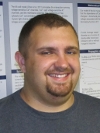 Adam Sullivan
Adam Sullivan
Dates: Fall 2011 - Spring 2013
Adam Sullivan earned a Ph.D. in Biomedical Engineering in 2013. His dissertation focused on dynamic modeling of the life cycle of Toxoplasma gondii and the transmission dynamics of the disease. After graduating, Sullivan accepted a position as an algorithm development engineer at ZOLL LifeVest in Pittsburgh, PA.
He is currently Senior Director of Artificial Intelligence at Change Healthcare.
Publications
- Sullivan AM, Zhao X, Suzuki Y, Ochiai E, Crutcher S, Gilchrist MA. 2013. Evidence of finely-regulated asynchronous growth of Toxoplasma gondii cysts based on data-driven model selection. PLoS Computational Biology, 9(11): e1003283. [Online]
 Ashutosh Wadhwa
Ashutosh Wadhwa
Dates: Fall 2011 - Spring 2012
Ashutosh Wadhwa earned a Ph.D. in Natural Resources Economics in 2012. After graduating, Wadhwa accepted a position as guest researcher on the rabies team at the National Center for Emerging and Zoonotic Infectious Diseases at the Centers for Disease Control and Prevention in Atlanta. He is currently a research assistant professor at the Center for Global Safe Water, Sanitation and Hygiene at Emory University.
 Henian Xia
Henian Xia
Dates: Fall 2010 - Spring 2011
Henian Xia earned a Ph.D. in biomedical engineering in 2012. His dissertation research focused on optimal control for cardiac alternans, a marker of sudden cardiac arrest.
He is now an engineer and cofounder at Zywie, a cardiac remote monitoring company.
Publications
- Xia H, Asif I, Zhao X. 2013. Cloud-ECG for real time ECG monitoring and analysis. Computer Methods and Programs in Biomedicine, 110(3): 253-259. [Online]
- Xia H, Wong K, Zhao X. 2012. A fully coupled model for electromechanics of the heart. Computational and Mathematical Methods in Medicine, 2012: Article ID 927279. [Online]
- Xia HN, Garcia GA, Bains J, Wortham DC, Zhao XP. 2012. Matrix of regularity for improving the quality of ECGs. Physiological Measurement, 33(9): 1535-1548. [Online]
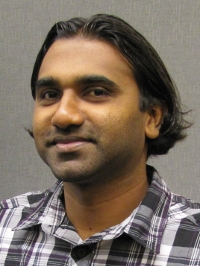 Lakmal Walpitage
Lakmal Walpitage
Dates: October 2015 - December 2016
Lakmal Walpitage earned a Ph.D. in the Evaluation, Statistics, and Measurement Program in the Department of Educational Psychology. At NIMBioS, he worked on projects related to the National Institute for STEM Evaluation and Research. Upon graduating, Walpitage accepted a position as Research Analyst at the Kansas Department of Health and Environment.
NIMBioS
1122 Volunteer Blvd., Suite 106
University of Tennessee
Knoxville,
TN 37996-3410
PH: (865) 974-9334
FAX: (865) 974-9461
Contact NIMBioS


